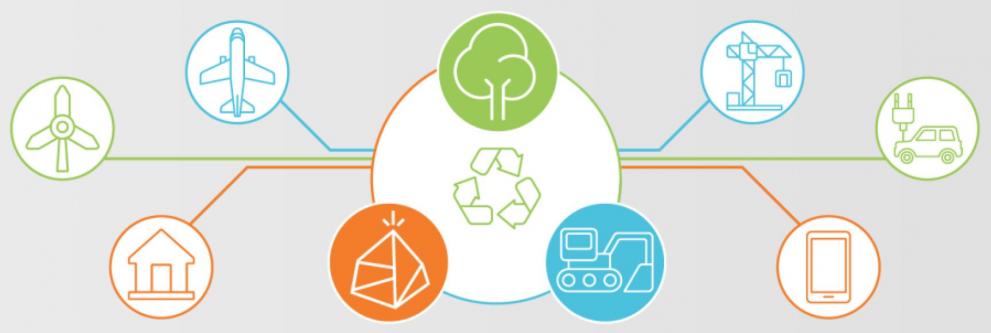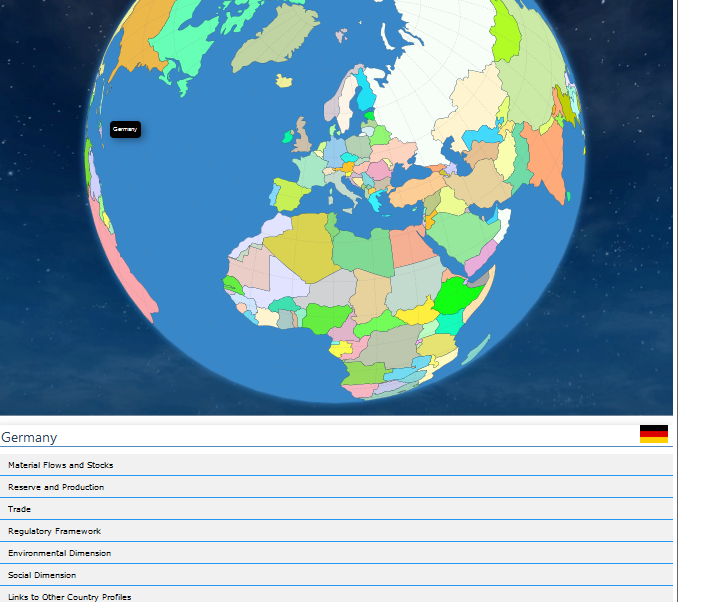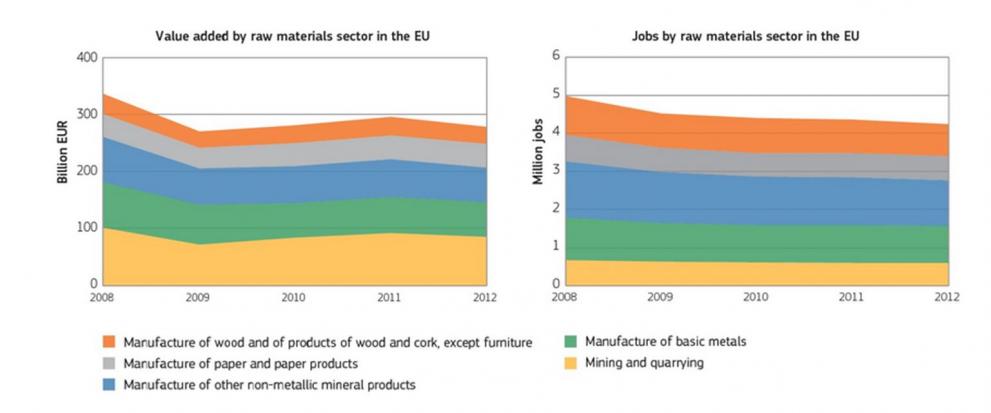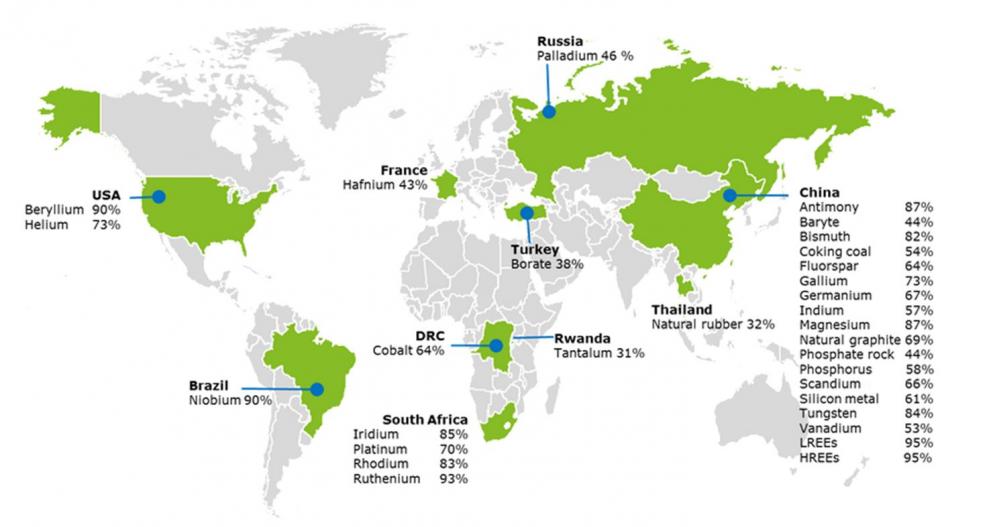
To ensure a secure and sustainable supply of raw materials and to better manage resource use, Europe requires comprehensive knowledge of the entire raw materials value chain. However, information is often scattered across several sources, such as ministries, agencies, geological surveys, research institutes, and universities.
Launched today at the European Commission's raw materials week, the Raw Materials Information System (RMIS) is the starting point for bringing this knowledge together. It provides a central platform in a user-friendly format, with key information on non-fuel, non-agricultural raw materials from primary and secondary sources. It focuses on both abiotic (minerals) and biotic materials, covering the entire value chain.
The Commission is committed to promoting the competitiveness of EU industries directly and indirectly reliant on the secure and sustainable supply of raw materials. These industries play an important role in many downstream sectors, such as construction, chemicals, automotive, aerospace, machinery, and renewable energy devices, which have a combined added value of €1,000 billion and provide employment for some 30 million people.
As well as being essential to industry, raw materials permeate our daily lives and livelihoods - from the dozens of metals, minerals and compounds inside the latest smartphone to the rare earth elements used in electric vehicles, cancer treatments, solar panels and aerospace technologies.
The RMIS is being launched in the context of the Strategic Implementation Plan of the European Innovation Partnership on raw materials (EIP-SIP), which highlights the need to develop a European Union Raw Materials Knowledge Base (EURMKB). The RMIS is designed as a core part of the communities’ raw materials knowledge base to facilitate coherence, quality-assurance and availability of information. Responding to a specific action of the Circular Economy Action and to several actions in the Raw Materials Strategic Implementation Plan, the RMIS is a formal commitment of the European Commission.
Facilitating the availability of core data for policy support
The RMIS provides information related to social, environmental, and economic considerations of primary and secondary raw materials with a key focus on EC policy support needs. The RMIS provides in-depth information across 12 interlinked thematic areas, including:
- Materials considered critical due to their high risk of supply disruption and high economic importance to EU industry (Critical Raw Materials - CRM)
- Materials from recycling and recovery (Secondary Raw Materials – SRM)
- Economics and trade
- Industry and innovation
- Raw materials and country profiles.
The RMIS is also a platform to bring together information on the environmental and social sustainability aspects of the raw materials sector.
The RMIS includes a section on ‘raw materials’ profiles and supply chains’ which allows users to access quantitative and qualitative knowledge relative to the supply chains of nearly 80 raw materials. This section also provides access to data and knowledge related to Material Flow Analysis (MFA) and, in particular, the Material System Analysis (MSA) at the level of the EU-28.

An additional aspect of the RMIS is the ‘Raw Materials Knowledge Gateway’ (RMKG). This gateway aims to establish a continuous exchange of knowledge with national, EU-level and global knowledge providers such as member states, EU and international organisations, data services, research bodies and industry associations. It is a virtual space for these providers to consolidate, expand and increase the visibility of their raw materials-related knowledge. In turn, this knowledge will be used to support the RMIS as it develops.
The raw materials scoreboard – monitoring the sector
Developed by JRC closely with the Commission's Directorate-General for the Internal Market, Industry, Entrepreneurship and SMEs (DG GROW), the raw materials scoreboard is an integral part of the RMIS. The scoreboard provides overarching indicators that reflect the scope of the RMIS and help monitor the sector, as well as contributing to monitoring progress towards the Circular Economy. The indicators included in the scoreboard are grouped into 5 clusters: raw materials in the global context, competitiveness and innovation, circular economy and recycling, framework conditions for mining, environmental and social sustainability.
For example, the scoreboard visualises the value added and jobs associated with extraction and basic manufacturing for different categories of raw material. In 2012, the sector contributed €280 billion of added value and more than 4 million jobs to the EU economy.

The scoreboard also highlights the state of play with efforts to encourage reuse and recycling. For example, the percentage of raw materials coming from recycled sources ranges from less than 1% in some cases to over 50% in the case of pulpwood, which is primarily used in paper production.

The CRM list: securing supply of critical materials
Critical Raw Materials, as well as other materials of high policy interest in relation to issues like due diligence and trade, are key considerations of the RMIS. Critical Raw Materials (CRMs) are those materials of high economic importance for the EU that also have a high risk of supply disruption. To compile the CRM list, every 3 years the Commission carries out a criticality assessment on a wide range of raw materials. This year the list was updated with 27 materials. Analysing candidate materials to develop such lists highlights the necessity of knowledge on raw materials including their supply chains, recycle rates, trade barriers and other considerations related to their economic importance and the likelihood of supply disruptions. The RMIS displays the CRM list, as well as providing raw materials’ factsheets with detailed information and visualisations of sources of the materials.

Related Content
Details
- Publication date
- 9 November 2017
